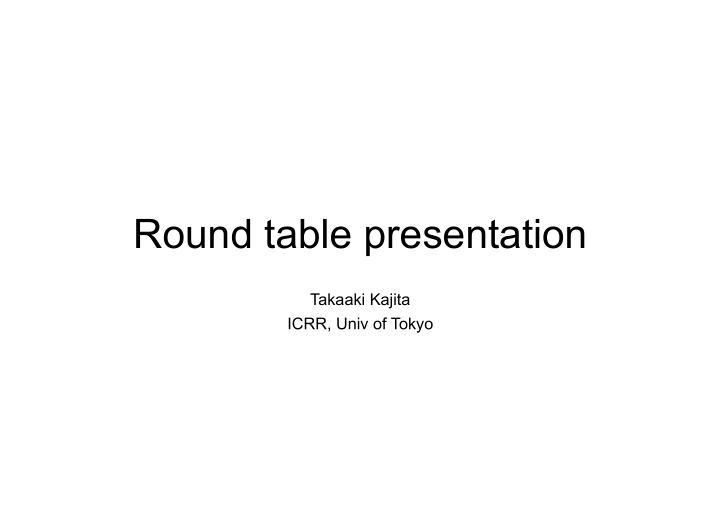



Round table presentation Takaaki Kajita ICRR, Univ of Tokyo
Activities in Japan related to APPEC • Super-Kamiokande has been contributing to neutrino oscillation physics for 20 years. Super-K is going to modify the detector (loading Gd) so that Super-K is going to be sensitive to past Supernova neutrinos. • KamLAND has been observing reactor neutrinos and geo-neutrinos. At present, the KamLAND’s main physics is double-beta decay. • Telescope Array has been contributing to the highest energy cosmic rays. The extension of the surface area by x4 is in progress. • KAGRA is a 3km-arm-length gravitational wave detector with the underground site and the cryogenic mirrors. It will take several more years to start the operation with the cryogenic mirrors. KAGRA hopes to join global GW network. • Joining CTA: The Japanese community wants to contribute to LST of CTA with mirrors and photo-detectors. At present, only a part of the request (LST’s of the CTA-north) has been approved . • More:
Activities in Japan (large infrastructure) • Inspired (partly) by the activities in Europe and USA, Japanese scientific community and the funding agency (MEXT) have setup a system to select the important scientific projects. • Since 2010 (2011), the Science Council of Japan has decided to list up important scientific projects (“Master Plan”) from all the scientific fields based mostly on the scientific importance in every 3 years. In the 2014 version, about 200 projects was identified. Among them, about 25 projects were recognized as “high priority”. (The deadline for submitting proposals for the 2017 version was March 31, 2016. 3 proposals were submitted from ICRR.)
Activities in Japan (large infrastructure) (2) • Then the Ministry of Education, Culture, Sports, Science and Technology (MEXT) evaluated these (~25) high-priority projects based on things like the technical readiness or the manpower/organization of the project. In the end, about 10 projects were listed to the “MEXT roadmap”. • However, listed to the roadmap does not mean to be approved. MEXT needs money to approve them... • In any case, it is necessary to be listed in the MEXT roadmap for a very large project (>100M$?) to be approved.
My views on regional or global coordination • The projects are getting bigger and bigger (and more complex), requiring more people to work together. • Therefore I think it is natural to have regional or global coordination. 2 examples: • KAGRA’s construction began with the Japanese funding. KAGRA wants to join the global network of GW detectors so that KAGRA can contribute to the GW astronomy. Also, KAGRA is trying to expand the collaboration from various countries, in particular from Asian countries. • The Japanese community would like to join and contribute CTA. In the budget request, we stressed the importance of joining the global project.
Recommend
More recommend